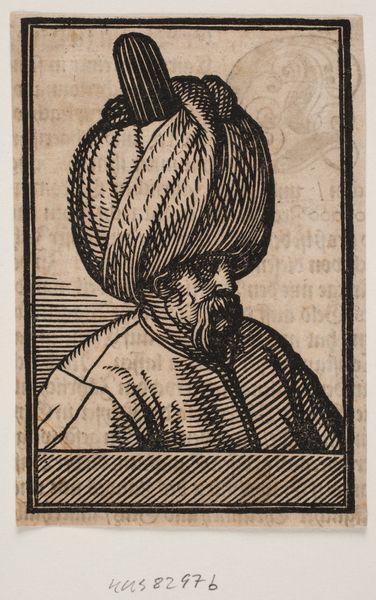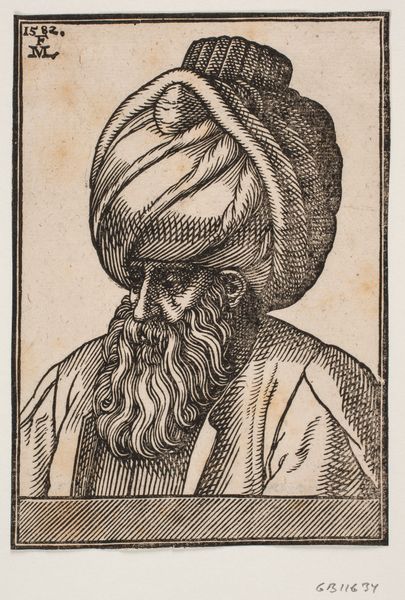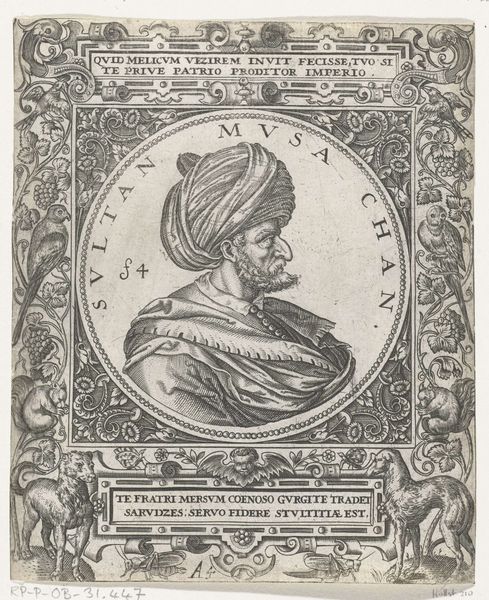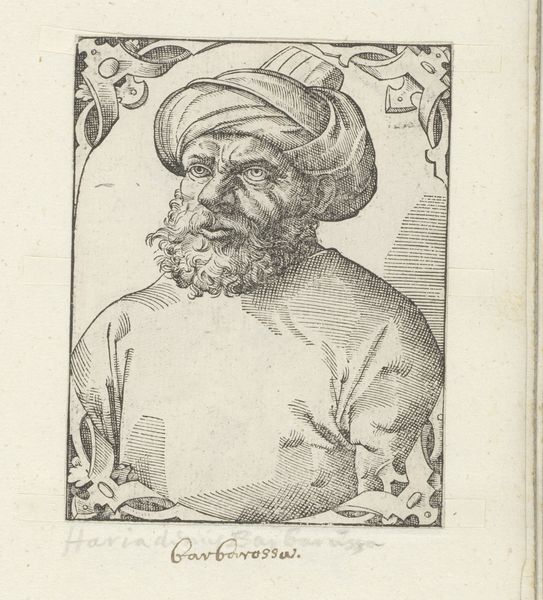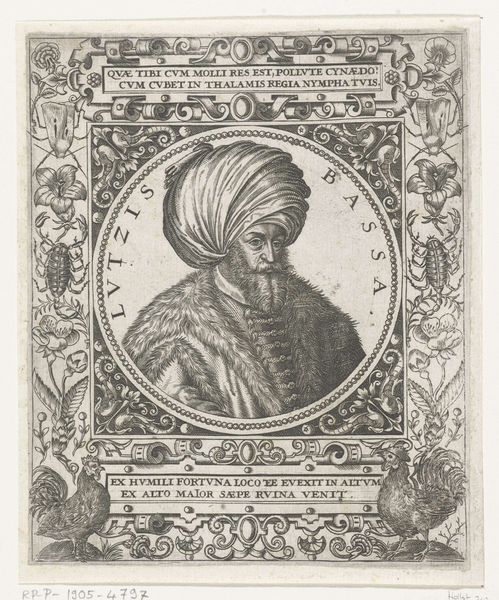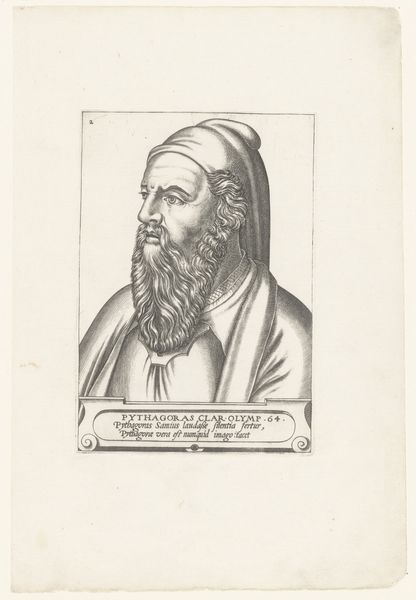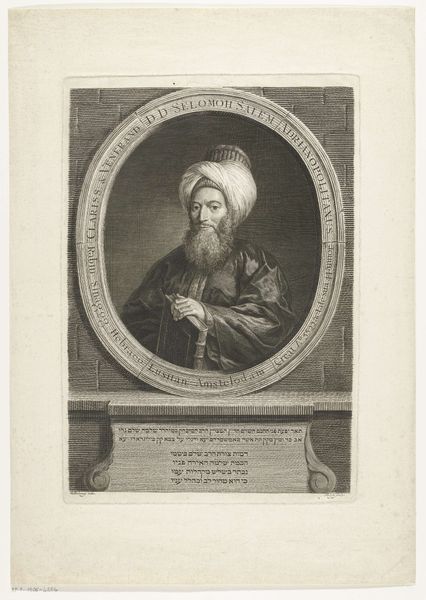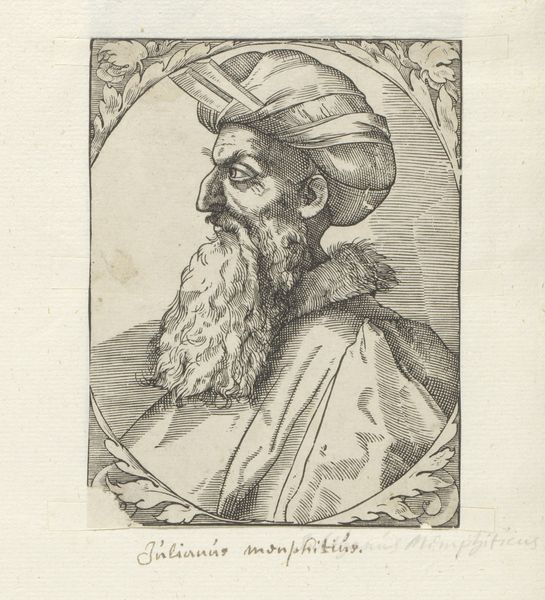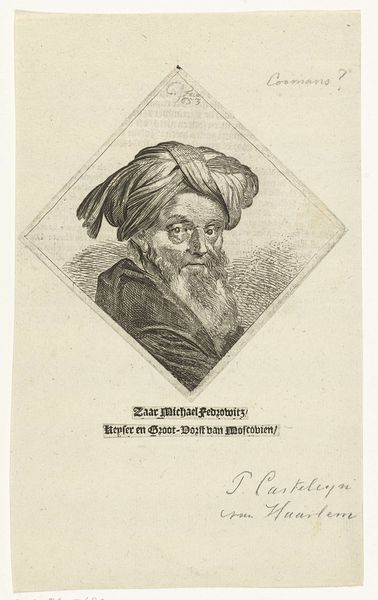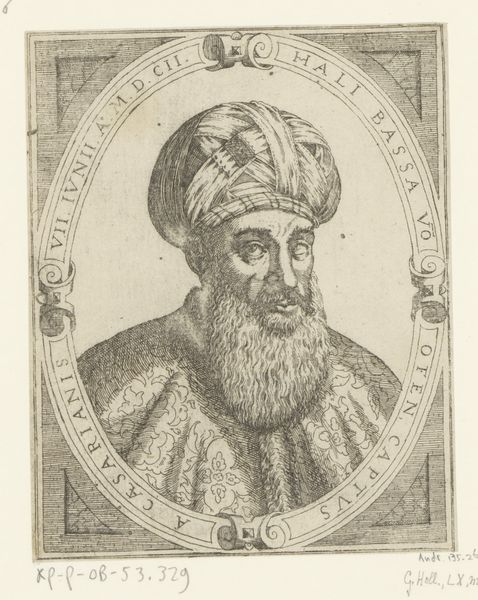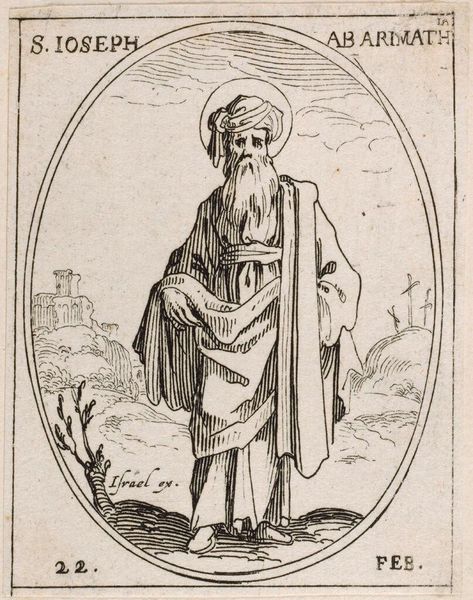
Bust of full-bearded man wearing a turban, 3/4 profile towards the left 1582
0:00
0:00
print, woodcut
#
portrait
# print
#
figuration
#
11_renaissance
#
woodcut
#
line
#
islamic-art
#
columned text
Dimensions: 222 mm (height) x 169 mm (width) (bladmaal)
Curator: Here we have a striking portrait titled "Bust of full-bearded man wearing a turban, 3/4 profile towards the left," created in 1582 by Melchior Lorck. It’s a woodcut print currently housed in the Statens Museum for Kunst. Editor: My initial feeling? Intrigue mixed with a touch of melancholy. Look at the detail in that turban – almost architectural. And that beard! It tells a story, doesn’t it? But there’s something about his gaze, slightly averted, that hints at… what? Resignation? Curator: Well, consider the context. Lorck was a keen observer of Ottoman society during his travels as a diplomat. This isn’t just a portrait; it's a document of cultural exchange. It reflects the European fascination and, perhaps, anxiety surrounding the Ottoman Empire at the time. Editor: Anxiety, definitely. The sharpness of the lines, the stark contrast…it’s not exactly flattering, is it? It feels like an attempt to dissect, to categorize “the other.” It makes me a bit uneasy, honestly. Curator: It's more complex than mere othering, though that is certainly present. Lorck’s work was pioneering in its ethnographic detail. He was genuinely interested in documenting the diversity of the Ottoman court, presenting detailed information to a European audience, for example that there are columned texts associated with his portraiture. The woodcut medium itself allowed for wider distribution and, therefore, wider engagement with these images and ideas. Editor: True, the medium matters. A woodcut has this…indelible quality. It feels… official, somehow, as if etched into collective memory. It lacks the softness, the ambiguity you'd find in a painting. Do you think that lends itself to a more definitive, maybe even a more dogmatic, reading? Curator: Possibly. But its accessibility also made it susceptible to varied interpretations, which circulated independent of the artist's intent. We have to remember the viewers as active participants, ascribing meanings within their own historical moment. The museum collection tells this tale as well as any other. Editor: That's true of the beauty in the turbans, something soft within such an austere rendering. And isn't that why we are here? To give things new voices. Curator: And in turn hear the stories the pieces will tell, generation to generation.
Comments
No comments
Be the first to comment and join the conversation on the ultimate creative platform.
